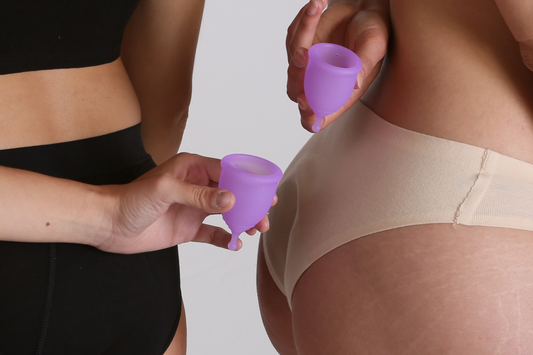
Yellow discharge: normal or a sign of alarm?
Vaginal discharge is a natural part of a woman's reproductive cycle, and can change in color, consistency and amount depending on a diverse range of factors. One of the colors that often causes concern is yellow discharge. In this article, we will explore what this type of discharge can mean and when it might be a cause for concern.
What is yellow discharge?
Vaginal discharge is normally clear or white, but it can take on different shades depending on several factors. Yellow discharge can be a normal variation of vaginal discharge, but it can also be a sign of an underlying condition.
Causes of yellow discharge
The color, consistency, and odor of vaginal discharge can differ depending on different factors, and the presence of yellow discharge can be a cause for concern for many women. In this section, we will explore the possible causes of yellow vaginal discharge, from natural reasons to infections that may require medical attention. It is important to understand these causes in order to make informed decisions about intimate health and seek appropriate treatment if necessary.
Natural secretions
In some cases, yellow discharge may simply be a normal variation of vaginal discharge. This may be due to factors such as diet, hydration, or even the presence of small amounts of blood mixed with the discharge.
Vaginal infections
Vaginal infections, such as bacterial vaginosis or candidiasis, can cause changes in the color of vaginal discharge, including yellow. These infections are often accompanied by other symptoms such as itching, foul odor or vaginal irritation.
Sexually transmitted infections (STIs)
Some STIs, such as gonorrhea or trichomoniasis, can cause greenish-yellow vaginal discharge. It is important to seek medical attention if an STI is suspected, as they can have serious consequences if not treated properly.
Antibiotic use
Prolonged use of antibiotics can upset the natural balance of the vaginal flora, which can result in a change in the color of the discharge, including yellow.
How to avoid yellow discharge?
Avoiding yellow vaginal discharge may depend on its underlying cause. Here are some general measures that may help prevent yellow discharge:
- Maintain good intimate hygiene: Wash regularly with warm water and a mild, fragrance-free cleanser. Avoid using perfumed soaps or products that may irritate the genital area.
- Wear cotton underwear: Opt for breathable cotton underwear that allows the genital area to breathe. Avoid tight-fitting underwear or underwear made of synthetic materials that can retain moisture.
- Avoid douching: Douching can upset the natural balance of vaginal flora, which can increase the risk of infection. Instead, rely on gentle cleansing with water and a mild cleanser.
- Practice safe sex: Use condoms consistently and properly to reduce the risk of contracting sexually transmitted infections that can cause yellow discharge.
- Maintain a balanced diet: A diet rich in fruits, vegetables, whole grains and lean proteins can help strengthen the immune system and reduce the risk of infections.
- Avoid stress: Chronic stress can negatively affect the immune system and increase the risk of infections. Find healthy ways to manage stress, such as regular exercise, meditation or therapy.
- Consult a health care professional: If you experience recurrent yellow discharge or if there are other worrisome symptoms, seek the guidance of a physician. A health care professional can evaluate your individual situation and recommend appropriate treatment if necessary.
Remember that everyone is different and what works for one person may not work for another. It is always important to pay attention to your body and seek medical help if you have concerns about your vaginal health.
When to seek medical help
If you experience yellow vaginal discharge and also have other symptoms such as itching, foul odor, irritation, abdominal pain, or changes in your menstrual cycle, it is important to seek medical attention. A healthcare professional will be able to make a proper diagnosis and provide you with the necessary treatment depending on the underlying cause.
In conclusion, while yellow vaginal discharge can be a normal variation of vaginal discharge, it can also be a sign of an underlying condition. It is critical to pay attention to other symptoms and seek medical help if there are any concerns. Remember that your reproductive health is important and deserves to be attended to with care and attention.











